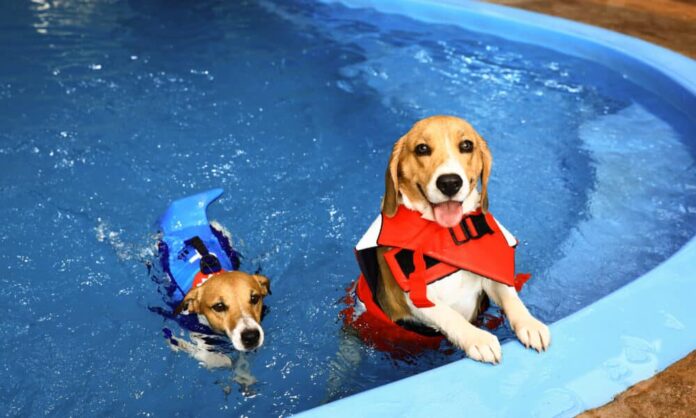Making Waves: A Guide to Introducing Your Dog to Water Safely
As summer approaches, the sun beckons dog owners to take their furry friends to lakes and beaches for refreshing aquatic adventures. Yet, the relationship between dogs and water can be complex. While many dogs eagerly leap into the waves, others may be hesitant, fearful, or unfamiliar with the concept of swimming. By following the right methods, you can ensure that your canine companion learns to love water activities. Here’s a comprehensive guide to introducing your dog to water safely and positively.
Understanding Your Dog’s Relationship With Water

Not all dogs share the same enthusiasm for water. Their reactions often depend on breed, temperament, and prior experiences. To tailor your introduction process effectively, consider these key points:
- Consider their breed: Water-loving breeds such as Labrador Retrievers and Cocker Spaniels typically enjoy swimming. In contrast, weightier dogs, like Pugs or Dachshunds, may require extra time and patience in the water.
- Assess their individual temperament: Your dog’s personality will influence their relationship with water. Some are naturally inquisitive and playful, while others may feel anxious in unfamiliar settings.
- Reflect on past experiences: Prior negative encounters, such as being unexpectedly thrown into the water, can hinder their enthusiasm.
- Watch for signs of comfort or discomfort: Positive signs include relaxed posture and a wagging tail, while signs of distress can include whining or attempts to escape.
Preparation: Tools for a Successful Water Introduction
Before your dog makes their splash debut, ensure you’re well-equipped to create a positive experience.
Creating Positive Associations With Water
Incorporate water-themed activities into your dog’s routine to foster a positive view of water. Consider introducing water-based games, using engaging toys, or even letting them play in a kiddie pool.
Essential Equipment
1. Life Jacket

A properly fitted life jacket acts as a safety net, especially for hesitant swimmers. Introduce your dog to the jacket before water activities for a smoother experience.
2. Leash
Use a leash to maintain control of your dog while in the water, ensuring safety and ease of movement.
3. Treats

Reward good behavior and bravery in the water with treats to reinforce positive experiences.
The Right Location
Choose calm, shallow water for initial introductions. Pay attention to water temperature, ensuring it’s comfortable for your dog.
Basic Obedience Training
Commands like “sit,” “stay,” and “come” are essential for maintaining control and ensuring your dog understands your cues during water activities.
10 Steps To Safely Introduce Your Dog to Water
Follow these steps to ensure a smooth, enjoyable introduction to water for your dog:
- Use a Life Jacket and Leash: These items provide an extra layer of safety for your dog during their initial water experiences.
- Start In Shallow and Tepid Water: Gradually introduce your dog to water—begin with shallow areas that have little to no current.
- Go at Their Own Pace: Allow your dog to enter the water at their comfort level; do not rush or force them.
- Offer Support: Accompany your dog into the water to provide reassurance and encouragement.
- Turn It Into a Positive Experience: Reward your dog with treats or toys while in the water to foster a loving association with the activity.
- Monitor Your Dog’s Reaction: Observe their body language. If they seem uncomfortable, give them space.
- Gradually Increase Exposure: Once comfortable, slowly allow your dog to explore deeper waters.
- Take Breaks: Swimming can be tiring, so ensure your dog has ample opportunities to rest.
- Practice Regularly: Regular exposure to water will build confidence and skill in swimming.
- Dry Them Off After Activities: Keep your dog warm and comfortable after their water adventures.
Common Mistakes Dog Parents Make When Introducing A Dog To Water
To avoid negative experiences, refrain from the following:
- Throwing a Dog Into the Water: This method creates fear and trauma, leading to a reluctance to swim.
- Disregarding Safety Precautions: Always use safety equipment to prevent accidental injuries.
- Letting a Dog in the Water Unsupervised: Safety should always be the top priority.
- Assuming All Dogs are Good Swimmers: Many breeds are not naturally adept at swimming.
Conclusion

Every dog has a unique personality and will respond differently to water. The key is to tailor the introduction process to fit their comfort and safety. Incorporate positive reinforcement and patience to help your dog build confidence in swimming. If they love the water, that’s fantastic! If they remain hesitant, respect their boundaries and preferences. A successful introduction can open the door to countless summer adventures for you and your furry friend!












